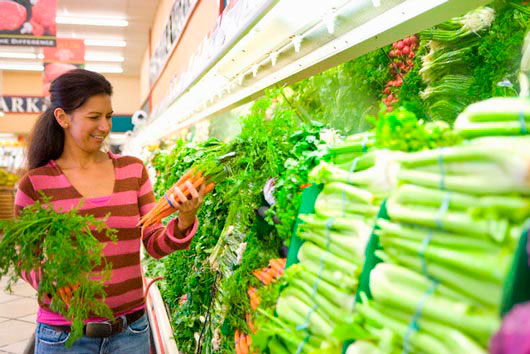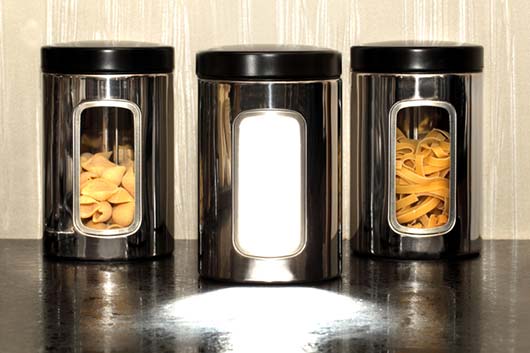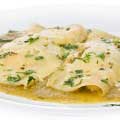
You shouldn’t shop when you’re in a rush, but wait until you have time to think. That makes you a good supermarket shopper. Those items marked “Special” are on sale. And don’t make a big amount of food because you’ll eat it all—isn’t that true? No, no way, and uh-uh, chica. Keep shopping like this and you’ll have to stop at the mall for a new pair of stretch pants, next size up. If you have money left over from your weekly grocery trip.
The best health and fitness plans begin with food—the right kind. Supermarkets are designed to sell products, not necessarily help you make the best choices, so we’ve compiled tips from shopping, nutritional, and financial experts that will get you and your family healthier and even lower your grocery bill.
Shop before you even leave the house. The answer to the chicken-or-egg question—plan menus first and then make a list, or vice versa?—is: neither. First, check coupon circulars for what’s on sale at your local supermarket. Then, plan a week’s worth of menus around them.
Your list is the law. Chances are your kitchen is full of impulse buys that may have even been on sale, but that may not be the healthiest choices, or even food you and your family like. Once you’ve planned your menus, stick to the shopping list you made based on them. Deviate only if you see something on sale that you actually use.
Shop in a hurry. Like to take your time while getting groceries? That increases your chances of putting stuff you don’t need in your cart, which takes money out of your wallet. Shopping when you have an hour to spare, or less, means you’re more likely to get only what you went there for.
Ignore that splashy display. You might think those items so nicely arranged right in your path are on sale—and that’s exactly what merchants want you to think. Compare prices and you’ll find these items often cost more than the wallflowers on the shelf. Better yet, pass them by, especially if they’re not items you use, and definitely if they’re not on your list.
Stay in the outer aisles. Fresh food is on the outside supermarket aisles, where it’s easier to have massive refrigeration units for dairy, meat, and produce. What’s in the inner aisles? Stuff that doesn’t need to be refrigerated, because it’s not real food. Avoid the belly of the supermarket beast, where cookies, chips, and high-calorie soda live, and watch your own belly shrink. Not going into these aisles with your kiddos also keeps them from seeing, and pleading with you for, manufactured snacks that are not good for them.
Buy dry. Canned beans and other vegetables are totally convenient—and totally loaded with sodium. High sodium levels can lead from water retention (who needs that) to congestive heart failure, stroke, and even kidney failure. Safe sodium levels don’t exceed 2,300 mg a day; the average can of black bean soup contains 2,100 mg. You read that correctly. However, bags of dried beans contain no added salt and are much cheaper per ounce. They’re just a little more effort: Cover 1 lb. of dried beans with water and let sit overnight, then boil for an hour before adding abuela’s secret black bean soup ingredients. Delicious and healthy.
Become a sugar cop. Sugar is not so sweet, given the rise in Type 2 diabetes for Latino kids. But it’s not enough to restrict the cookies; sugar, or some form of it, is added to almost every type of food. You may not realize that because it goes by so many other names. Learn sugar’s aliases: high fructose corn syrup, maltodextrin, dextrin, dextrose, fructose, glucose, maltose, sucrose, xylose. Better yet, buy sweet fruit—mangoes, dates, raisins, pineapple—which has no added frankensugar.
Think big. Buy a few bags of dried beans and a few boxes of fortified whole wheat pasta so you can put together quick and easy meals instead of ordering fat-filled pizza. When cooking, make enough to take to work for lunch the next day. Knowing you have a dish of your own delicious pernil or soup will keep you away from fattening fast food temptation.
Fresh or frozen? Here’s the rule: Fresh is better than frozen, but frozen is better than nothing. Broccoli and cauliflower lose most of their vitamins within days of being picked. If your market’s veggies look like they’ve been around since the last election, frozen veggies are a surprisingly healthy alternative. They’re often packaged close to where they’re picked, freezing in nutrients. Again, buy a few bags to keep on hand and toss with garlic and olive oil for a better version of fast food. Needless to say, we’re referring to the frozen veg sin buttery sauce.
Meatless is more. Nutritious, that is. Good quality meat can be expensive. Cheap meat is cheaper at the checkout but can cost you more in health. Factory-farmed meat can be loaded with hormones and chemicals, as well as “broth”—flavored water that adds weight and, therefore, costs more. At least one night a week, go meatless. Check out Meatless Monday for fast, easy, deliciously healthy recipes.
Hunt high and low. A fairly well-kept supermarket secret: Manufacturers pay for premium shelf space, which is right at your eye level. Less expensive versions of similar items, as well as same-but-cheaper store brands, are on the upper or lower shelves. Stand on your tiptoes to reach up, toning your calves, and do squats to reach down!
Eat your words. You know the saying: You are what you eat. Look at what’s in your shopping cart. You don’t want to say, “I am junk.” You want to say, “I am real, I am fresh, and I am healthy.” If you can say that at most of your meals, you’ll be on your way to the best version of you.











